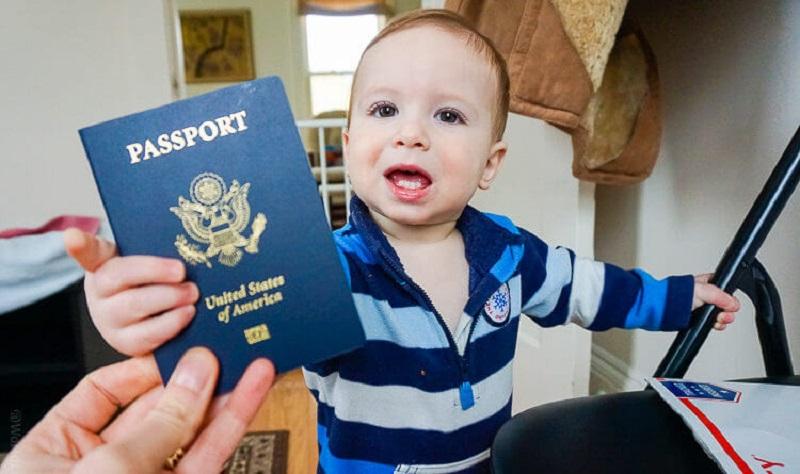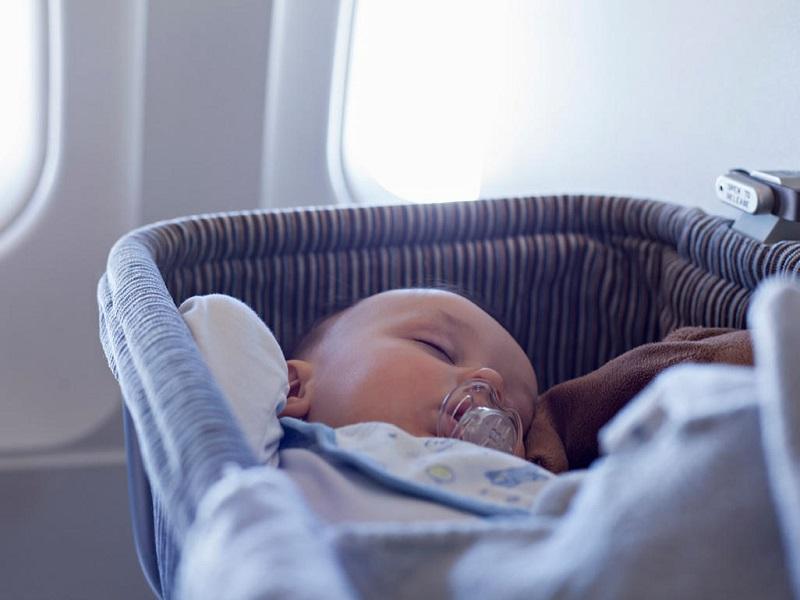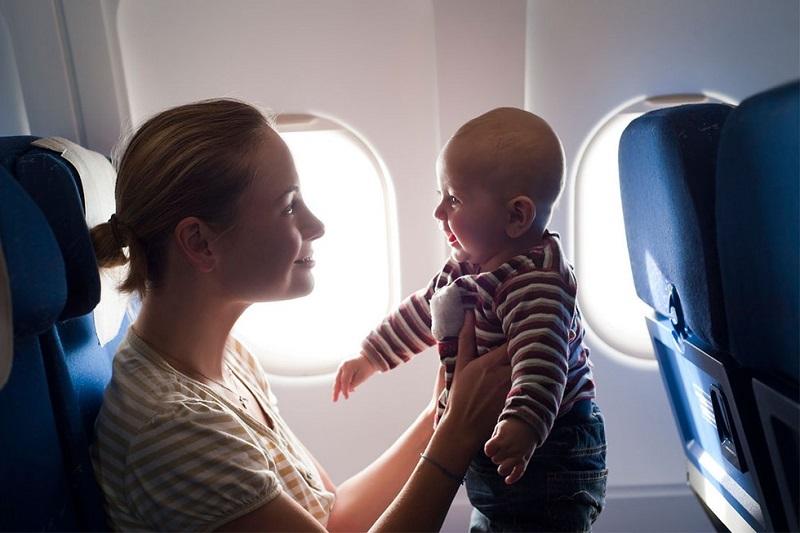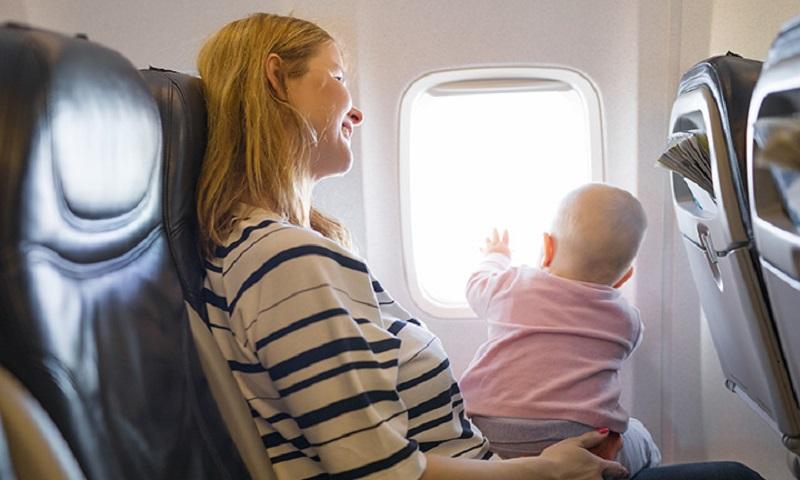Getting a few days away from life’s routines is an exceptional reset button everyone should have up their sleeve. And I mean everyone. Even new parents should be able to plan a trip to paradise.
For many, a baby means sleepless nights, diaper changes, and the occasional explosion of baby food on your freshly laundered shirt. In truth, this can sour the mood on any day but there are several ways to keep everything in check while on a trip. Here is a practical guide for flying with an infant;
When can the baby travel for the first time
According to the American Academy of Pediatrics (AAP), babies are at severe risk of infection in the first few months of their lives. The organization advises parents to hold off on any unnecessary travel for at least two months to allow infants to build immunity or until they get their immunizations. This applies to all forms of travel including road, train, and flights.
What do babies need to fly?
Before you pack your bags or book that trip, you must acquaint yourself with what you need for your trip. We have compiled a list of documents and items that should be with you at all times during your trip. These include;
Air ticket
Most airlines typically don’t require you to purchase a ticket for infants under 2 years old for domestic flights. However, taxes and fees may still apply. This means your little one will need to cozy up on your lap for the duration of the journey. Should you opt to secure a separate seat for your baby, they’ll need to be snugly strapped into their car seat during the flight.
The rules shift slightly when flying internationally as some airlines may require a ticket for infants under 2 years. You are also required to inform the airline in advance of your baby’s presence onboard.
Passport

Flying with a baby requires meticulous planning, starting with obtaining documentation for your little adventurer. Surprisingly, even newborns need a passport if they’re flying internationally. To get one for your baby, you will fill out the DS-11 form and apply in person ahead of time. For domestic flights within the United States, babies and children under 18 can fly without a passport or ID.
Birth Certificate
Some airlines are sticklers for proof of age documentation for babies and generally kids under 18 years. For a hassle-free experience, call your airlines and find out if they require you to carry the birth certificate.
Letter of consent
Flying internationally with a baby requires proper documentation, and even more so when it comes to navigating customs and border control. Parents traveling with a child but without their partner should carry a notarized letter granting parental permission.
This recommendation holds whether one parent is accompanying the child or if the child is traveling alone. In the latter scenario, both parents must authorize the note.
Practical tips for flying with a baby
Traveling with a baby might feel daunting but there are so many practical ways for both of you to enjoy the experience. Here are some practical tips for flying with an infant;
Stick to the baby’s schedule
One way to breeze through the journey is to align to your baby’s naptime, bedtime, and feeding schedule. Babies love timetables and maintaining that sense of order can significantly improve your baby’s behavior during travel.
By scheduling activities around these key moments, you can ensure that your little one is well-rested and fed. This minimizes the chances of crankiness and meltdowns mid-flight.
Pay for a plane seat for your baby

Paying for a seat for your baby might feel like splurging but it isn’t. Along the way, both of you will need some alone time and that extra cost could be the key differentiator. Most airlines offer discounts for babies so you won’t spend as much as you would for an adult.
It also means you can bring a car seat along for the flight. With a secure and familiar place to stow your baby, you can relax a little more knowing they’re snug in their own space. Just ensure your child-restraint system (CRS) is approved for airplane use.
Prep your liquids (juice, formula, water, and breast milk)
Prep your liquids, whether it’s formula, breast milk, or juice before getting to the airport. These are exempt from the TSA’s 3-1-1 rule. This means you can bring the amount you need for your flight.
You should also keep them in a separate bag or container for easy screening at security. It’s safe for liquids to go through the X-ray machine. But you can also request a visual inspection if you prefer.
Pack extra always
Flying with a baby requires careful packing, especially when it comes to ensuring you have all the essentials on hand. Stock up on formula, bottles, water for older babies, and solids, packing more than you need, just in case you run into some delays. Don’t overlook the necessities for pumping if required.
In the event of a messy emergency, be prepared with extra wipes and multiple changes of clothes for your little one. Also, bring plenty of diapers and plastic bags to contain any trash until you can dispose of it properly.
And don’t forget about yourself – keep a spare set of clothes handy in case of spit-up or blowouts, along with travel-sized versions of diaper cream, baby shampoo, body wash, moisturizer, and other essentials for your baby’s daily routine.
Keep your baby entertained

When jetting off with an infant, it’s crucial to bring along a selection of books and toys to keep them happily occupied. Bring along their beloved comforts from home, such as their favorite stuffed animal or snuggly lovey, to provide a sense of security in unfamiliar surroundings.
You can also introduce new toys or activities that they haven’t experienced before; the novelty of these items can be a game-changer, captivating their attention for hours on end.
Happy travels for the Baby Aboard
So, there you have it, fellow adventurers – a crash course in navigating the turbulent skies of parenthood. Armed with these tips and a healthy dose of humor, you’ll be well-equipped to embark on your next epic journey with your pint-sized sidekick in tow. Bon voyage!




